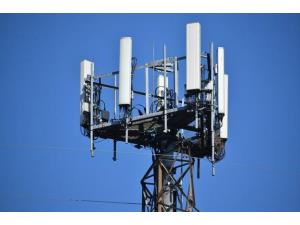



Date:01/12/20
 Ericsson projects that four out of every ten mobile subscriptions in 2026 will be 5G, with the technology deploying the fastest of any generation of mobile connectivity.
Ericsson projects that four out of every ten mobile subscriptions in 2026 will be 5G, with the technology deploying the fastest of any generation of mobile connectivity.
The Ericsson Mobility Report estimates that by the end of 2020, more than 1 billion people – 15 per cent of the world’s population – will live in an area that has 5G coverage rolled out. In 2026, 60 per cent of the world’s population will have access to 5G coverage, with 5G subscriptions forecast to reach 3.5 billion.
Ericsson has raised its year-end 2020 estimate for global 5G subscriptions to 220 million, as service providers continue to build out their networks. The increase is largely due to fast uptake in China, reaching 11 percent of its mobile subscription base. This is driven by a national strategic focus, intense competition between service providers, as well as increasingly affordable 5G smartphones from several vendors.
The report also highlights why 5G success will not be limited to coverage or subscription numbers alone. Its value will also be determined by new use cases and applications, the first of which have already started to emerge.
Critical IoT, intended for time-critical applications that demand data delivery within a specified time duration, will be introduced in 5G networks. This will enable a wide range of time-critical services for consumers, enterprises and public institutions across various sectors, with 5G public and dedicated networks.
Cloud gaming is another emerging application category. The combined capabilities provided by 5G networks and edge compute technologies will enable game streaming services on smartphones to compete with a quality of experience (QoE) that is on par with PC or console counterparts, opening up for innovative, immersive games based on mobility.
The rate of introducing 5G New Radio (NR) functionality is increasing, with more than 150 5G device models launched commercially. Many devices support 5G frequency division duplex (FDD) and dynamic spectrum sharing (DSS). The first 5G standalone (SA) networks have been launched in Asia and North America, as well as the first devices capable of NR carrier aggregation.
Xəbərin BaşlığıMore than 1 billion people will have access to 5G coverage by end of 2020: report
 Ericsson projects that four out of every ten mobile subscriptions in 2026 will be 5G, with the technology deploying the fastest of any generation of mobile connectivity.
Ericsson projects that four out of every ten mobile subscriptions in 2026 will be 5G, with the technology deploying the fastest of any generation of mobile connectivity.The Ericsson Mobility Report estimates that by the end of 2020, more than 1 billion people – 15 per cent of the world’s population – will live in an area that has 5G coverage rolled out. In 2026, 60 per cent of the world’s population will have access to 5G coverage, with 5G subscriptions forecast to reach 3.5 billion.
Ericsson has raised its year-end 2020 estimate for global 5G subscriptions to 220 million, as service providers continue to build out their networks. The increase is largely due to fast uptake in China, reaching 11 percent of its mobile subscription base. This is driven by a national strategic focus, intense competition between service providers, as well as increasingly affordable 5G smartphones from several vendors.
The report also highlights why 5G success will not be limited to coverage or subscription numbers alone. Its value will also be determined by new use cases and applications, the first of which have already started to emerge.
Critical IoT, intended for time-critical applications that demand data delivery within a specified time duration, will be introduced in 5G networks. This will enable a wide range of time-critical services for consumers, enterprises and public institutions across various sectors, with 5G public and dedicated networks.
Cloud gaming is another emerging application category. The combined capabilities provided by 5G networks and edge compute technologies will enable game streaming services on smartphones to compete with a quality of experience (QoE) that is on par with PC or console counterparts, opening up for innovative, immersive games based on mobility.
The rate of introducing 5G New Radio (NR) functionality is increasing, with more than 150 5G device models launched commercially. Many devices support 5G frequency division duplex (FDD) and dynamic spectrum sharing (DSS). The first 5G standalone (SA) networks have been launched in Asia and North America, as well as the first devices capable of NR carrier aggregation.
Views: 291
©ictnews.az. All rights reserved.Similar news
- Azerbaijani project to monitor disease via mobile phones
- Innovative educational system to be improved under presidential decree
- NTRC prolongs license of two TV and radio organizations for 6 years
- Azerbaijan establishes e-registry for medicines
- Azerbaijani museum introduces e-guide
- Nar Mobile opens “Nar Dunyasi” sales and service center in Siyazan city
- International conference on custom electronic services held in Baku
- OIC secretary general to attend COMSTECH meeting in Baku
- Azerbaijan develops earthquake warning system
- New law to regulate transition to digital broadcasting in Azerbaijan
- Azerbaijani State Social Protection Fund introduces electronic digital signature
- Intellectual traffic management system in Baku to be commissioned in December
- Tax Ministry of Azerbaijan started receiving video-addresses
- World Bank recommends Azerbaijan to speed up e-service introduction in real estate
- Azerbaijan to shift to electronic registration of real estate





















